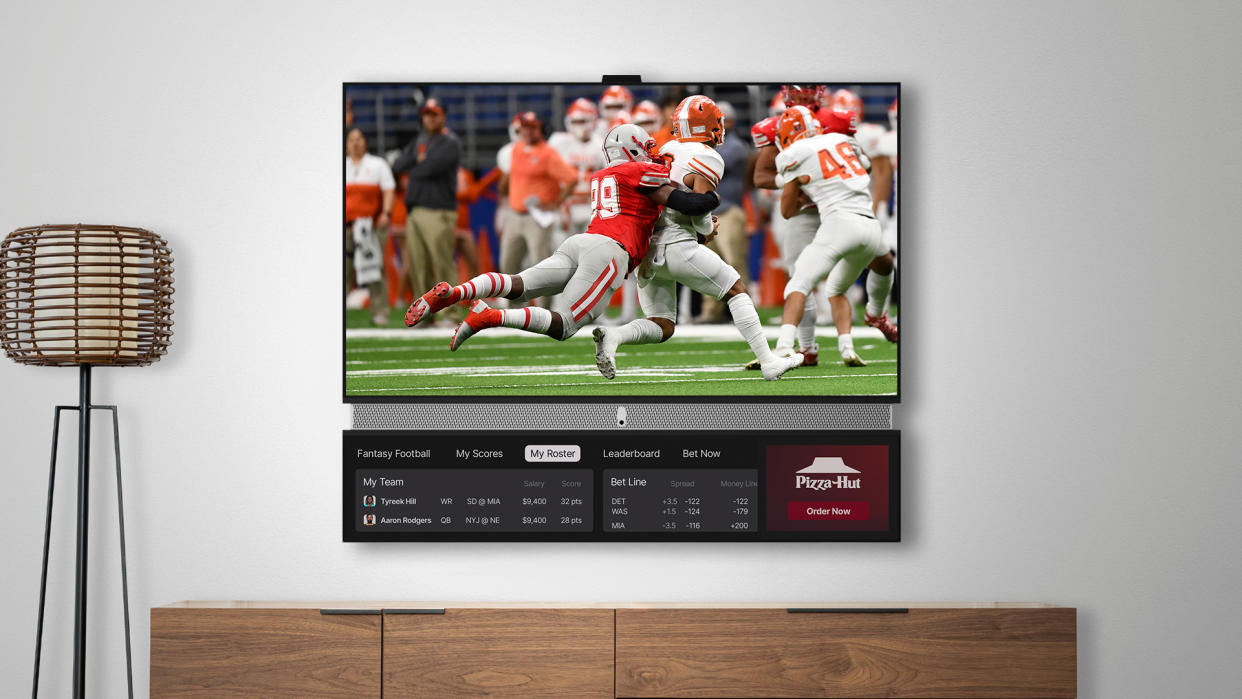Telly Falls Short of 500K Customer Goal for 2023, but Does Get Effusively Positive ZDNet Review

Telly, the startup trading free 55-inch smart TVs in exchange for personal viewer data, fell short of its stated goal to distribute 500,000 of its devices by the end of 2023.
“Instead of rushing to ship 500,000 this year, we’re planning for a much bigger scale,” he said, emphasizing that the company is now working with “higher-quality” manufacturers and device partners. Close to 400,000 people are currently on Telly’s waiting list, Telly founder and CEO Ilya Pozin told Marketing Brew earlier this month.
Speaking to Next TV on Monday, Telly chief strategy officer Dallas Lawrence wouldn't say how many of the company’s boxes are in the hands of real-world users at this point.
Lawrence said the San Francisco-based advertising company remains “laser-focused on our core mission of building the smartest TV ever developed, delivered at the revolutionary price point of free for every consumer in America.”
“We are reinventing the TV and revolutionizing advertising, in the process providing consumers with an incredible TV experience and advertisers with new and far more relevant ways in which to reach and engage consumers on the biggest screen in the home,” Lawrence added.
While mass adoption of Telly hasn't yet occurred, ZDNet contributor Artie Beaty managed to ascend from the company’s waiting list to the level of actual product review, effusively headlining his story, “I gave Telly my data and privacy for a free TV — and I don't regret it.”
Describing himself as initially “uninterested” in Telly’s proposition, Beaty said he succumbed to the “allure” of its bait — a free TV.
The device was much heavier than the freelance tech writer expected — it took two delivery guys to bring it into his home, he said. But the advertising was also less intrusive than he expected. Telly includes two screens — a main viewing screen and a smaller one that displays advertising and other data.
“When I first fired up my set, an ad for a credit app played on the main screen,” Beaty wrote. “The bottom screen showed the weather, NFL scores, a news article, a scrolling news ticker and an advertisement for a local hospital. The advertisement took up about a fifth of the bottom screen.
“My first thought was, ‘That’s it?’ ” he continued. “The ads weren't nearly as intrusive as I expected. The ad on the bottom does occasionally stretch to fill up the whole second screen, but it's not often. And Telly understands what you're watching — say, an NFL game — and displays relevant ads.”
Beaty even described the bottom-screen display as accretive to his viewing experience.
“Seeing NFL scores without checking my phone was convenient, and I saw several news stories that caused me to seek out more info,” he wrote. “Telly wasn't inundating me with ads like I thought; instead, it was providing useful information tailored to my interests.”
Essential Gimmick
Telly’s bottom screen (its major gimmick) displays ads that occasionally stretch to fill the whole screen. This second screen also serves as a quick navigation hub and center for user widgets. And, according to Beaty, the TV takes full advantage of the wealth of user information provided up front, as well as individual user habits, to generate customized ads tailored to personal interests.
Beyond the issue of distraction, which Beaty downplayed, is the core issue of user privacy.
Telly, in its initial user sign-up survey, asks for detailed information about viewer behaviors, including gender, ethnicity, and even whether you’re a “skateboarder,” “environmental activist” or something else entirely.
And Telly, in turn, uses that initial data dump for targeted advertising, then collects ever more user information to hone in even further.
“Ensuring consumer privacy is at the very core of everything we do at Telly,” Lawrence insisted. “We have developed the most transparent privacy agreement with the consumer ever developed, and we don’t bury it in 20 different links of confusing messaging. We are very clear that we believe consumers should share in the value exchange of advertising that is already happening on their TVs today. We are seeing that this approach has broad appeal, as those signing up for a Telly mirror the U.S. Census to a near-perfect match.”
Telly TVs come with 4K displays and built-in Harmon Kardon soundbars. Despite the minimal uptake of the novel gadgets, Lawrence believes they’re going to disrupt the American home.
“Just as the iPhone eliminated entire classes of products such as Walkmans, GPS devices and digital cameras, Telly is doing the same for the home eliminating the need for sound bars, voice assistants, fitness devices, and so much more,” Lawrence added. “Don’t be fooled by free. This is the smartest and most useful TV ever built.”

